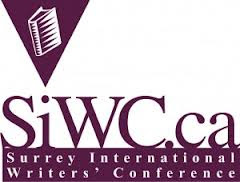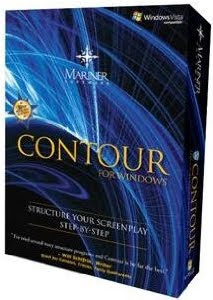As I mentioned
yesterday, I attended the annual
Surrey International Writers' Conference last weekend and am brimming with information from the various workshops I attended. There's so much I want to talk about! First up, let's look at Mary Robinette Kowal's workshop,
The Mysteries of Outlining.
Orson Scott Card's MICE Quotient
I heard about Orson Scott Card's MICE quotient before, but I never used it. I'm not sure why. Obviously I hadn't realized how powerful it was, or how to apply MICE to my writing. If you don't immediately understand its relevance either, hang in there. I need to describe MICE before we get into the nitty-gritty of how to apply it to your stories.
This article is too big for one post, so here's how I'm going to break things up. Today I'll talk about MICE. I'm going to try to cover the whole thing, but I may just get half through, depending on how much time I spend on examples. Another post will talk about how to apply MICE to your writing; how to use it. The third, and last, post will discuss another tool Mary discussed: "Yes, but ..." & "No, and ...".
At least, that's the plan! :-)
What is a MICE Quotient? Will it bite?
In his book
Characters and Viewpoint Orson Scott Card writes:
[W]hat are the different kinds of stories? Forget about publishing genres for a moment-there isn't one kind of characterization for academic/literary stories, another kind for science fiction, and still others for westerns, mysteries,
thrillers, and historicals. Instead we'll look at four basic factors that are
present in every story, with varying degrees of emphasis. It is the balance
among these factors that determines what sort of characterization a story
must have, should have, or can have.
The four factors are milieu, idea, character, and event:
Here's a summary:
MILIEU: A milieu story concerns the
world surrounding the characters you create.
IDEA: An idea story concerns the
information you intend the reader to uncover or learn as they read your story.
CHARACTER: A character story concerns the
nature of at least one of the characters in your story. Specifically,
what this character does and
why they do it.
EVENT: An event story concerns
what happens and
why it happens.
Let's examine each of these in turn.
Milieu Story
Start: The story begins when the main character enters the strange new world.
End: The story ends when the main character comes back from the strange new world.
Characterization: less is more
Orson Scott Card writes:
Characterization is not a virtue, it is a technique; you use it when it will enhance your story, and when it won't, you don't.
Focus on the world/setting. If you draw the reader's attention to a character, even your main character, you are taking their attention away from the milieu. In a milieu story it's fine to describe the setting just for the sake of elucidating the world. In other kinds of stories this would be considered padding. Generally readers aren't primarily interested in the world you've created, they want to get to the solution of the puzzle or they want to understand why a certain character is acting a particular way. In a Milieu story, though, your readers are primarily interested in the world you've created, so go for it!
The main character, or characters, of a Milieu story should be 'normal'. That is, they should do what you think anyone would do given the same circumstances. You don't want them to stand out and draw your reader's attention away from the milieu and onto them. In a sense, your characters will be types rather than fully formed individuals because you want them to be typical of certain cultures or social roles that exist within your milieu.
Examples
A pure milieu story is rare. Usually a milieu story is mixed with one of the other three types of stories. For instance JRR Tolkien, in crafting Lord of the Rings, took great care in describing his fictional universe--in many ways that was the main focus--but it was also an idea story.
Frodo needs to get rid of the magical ring Bilbo gave him. He tries to give it to Gandalf but Gandalf adamantly refuses. First Frodo takes it to the elves in the hope they will take up the burden but even they cannot. In the end Frodo realizes he can't rely on anyone else to destroy the ring so he and Sam carry it to Mount Doom.
Orson Scott Card also gives Dune as an example of a Milieu story.
General types of stories that are milieu stories: travelogues, utopian fiction, natural science and westerns.
Idea Story
Start: The story begins when your main character meets an obstacle. They have a problem that must be solved. This gives rise to a question: how will they get around the obstacle?
End: The story ends when the character has answered the question and removed the obstacle.
Characterization: The eccentric problem solver
Since the focus is on a problem, or the idea of how to solve the problem, you don't want your characters to steal the focus. That said, you DO need your characters to be entertaining. Many authors give these kinds of characters eccentric characteristics to help differentiate them and make them more interesting as they go about the main job of the story: solving the problem.
Examples
- Bob needs $100,000 dollars to pay off a loan shark. He plans to rob a bank to get the money. He robs a bank. Bob learns some new skills during the course of the story and decides to blackmail the loan shark into forgiving his debt.
- Mr. Smith is found murdered in a locked room. Five people were near the room at the time of the murder and all five had motive but, apparently, no means. At the end of the story the sleuth discovers one of the five is a magician and able to create a locked room illusion. Case closed.
General types of stories that are idea stories: Allegories, locked room mysteries, bank heist stories, and so on. Anything where the idea is everything.
Character Story
Start: Your main character is unbearably dissatisfied with their role in society and sets about changing it.
End: Your main character either finds a new role, is content to return to their old role or despairs.
Characterization: God is in the details
As you can guess, for a
Character Story well-rounded characters are a must. Orson Scott Card writes:
Needless to say, the character story is the one that requires the fullest characterization. No shortcuts are possible. Readers must understand the character in the original, impossible role, so that they comprehend and, usually, sympathize with the decision to change. Then the character's changes must be justified so that the reader never doubts that the change is possible; you can't just have a worn-out hooker suddenly go to college without showing us that the hunger for education and the intellectual ability to pursue it have always been part of her character.
That said, only the main character and any character involved with their decision to change their social role, must be fully characterized. As Orson Scott Card remarked, characterization is a technique. Use it if it will add to your story, otherwise don't.
Examples
- Maria is miserable. Her husband won't allow her to work but, when she needs money to go grocery shopping, he throws a fit. Maria hasn't bought new clothes for herself in ages.
Every day on her way home from the grocers Maria sees a beautiful red dress in the front window of a local boutique. She would love to buy the dress but it's completely out of her price range. One day she discovers the boutique is closing and the red dress has been marked down 90%. Ecstatic over her good fortune she buys the dress and wears it when her husband comes home from work.
Maria's husband throws a fit. Maria tries to tell him she paid next to nothing for the dress but he ignores her and, in a rage, rips the dress off her body, destroying it. Maria discovers she can't live like this anymore and leaves her husband. Maria works her way through school, finds a good job and, after a few disappointing dates, resigns herself to growing old alone and adopts ten cats.
- Danny is a hit man for Killers-Are-Us. One day his boss, Marty, tells him to kill a young girl, a task Danny finds repugnant. Danny has a choice: do his duty or leave his old life behind. Danny chooses the latter and Marty orders his top people to take Danny out.
After evading and dispatching his pursuers Danny realizes he'll be pursued until someone succeeds in killing him. Danny decides to return to his old life but instead of asking Marty for his job back he assassinates Marty and becomes head of Killers-Are-Us.
In this kind of story there needs to be a basic belief that some sort of order should exist in the world. Maria believes the way her husband treats her is wrong and that she'll be able to build a better life. Danny believes that killing children is just plain wrong. Full stop.
Note that Danny's story could also be an
Idea Story. Instead of focusing on his changing role in life, we could focus on his idea to get away from his demented boss. In this case, though, the story might end after he'd dispatched the first wave of killers.
I see Danny lean nonchalantly against an alley wall, wipe the blood of his would-be killer from his hand and take a long pull from a cigarette. He exhales and looks down at the bloody bodies of his victims strewn at his feet. Danny then gazes into the distance, sees the next wave of killers coming his way, and smiles. The end.
That could work as an
Idea Story, if that's how we'd set it up, but having set it up as a character story, I think the more satisfying ending is either Danny getting away clean and starting a new life, giving in and going back to the old one, or finding--as I've suggested in my example--a third way.
General types of stories that are Character Stories: Romances.
Event Story
Although events happen in every story, the world in an
Event Story is out of whack. It is out of order; unbalanced. An
Event Story is about the struggle to re-establish the old order or to create a new one.
Start: Your main character tries to restore order to the world.
End: Your main character either succeeds or fails.
Characterization: The level of detail is up to you
In this kind of story you can be as detailed as you like with your characterizations. Orson Scott Card writes:
It's possible to tell a powerful event story in which the characters are nothing more than what they do and why they do it-we can come out of such tales feeling as if we know the character because we have lived through so much with her, even though we've learned almost nothing about the other aspects of her character. (Although Lancelot, for instance, is a major actor in the Arthurian legends, he's seldom been depicted as a complex individual beyond the simple facts of his relationship to Arthur and to Guinevere.) Yet it is also possible to characterize several people in the story without at all interfering with the forward movement of the tale. In fact, the process of inventing characters often introduces more story possibilities, so that event and character both grow.
Examples
- The movie
Trading Places is an event story. Here's the tag line: "A snobbish investor and a wily street con artist find their positions reversed as part of a bet by two callous millionaires". The end of the movie comes when the upper-class commodities broker (played by Dan Aykroyd) re-establishes order in his world by besting the bosses who were tormenting him.
Stories that are Event Stories: The Count of Monte Cristo, Oedipus Rex, Macbeth, The Prince and the Pauper, and so on. Orson Scott Card gives many examples in his book,
Characters and Viewpoint.
Social Contracts And Your Readers
In every story you make an implicit contract with your reader. For instance, if a murder occurs at the beginning of your story and you focus on characters who have a reason to find out how, why and by whom the murder was committed then your readers will expect to discover how, why and by whom the murder was committed. (Simple, right?) If they don't, they won't be happy with you or the story you've written.
The general rule of thumb is this: Whatever kind of story you start out writing--be it Milieu, Idea, Character or Event--you have to finish writing that
same kind of story. For instance, if you start out writing an
Idea Story such as the murder mystery I mention, above, then you have to end it like an idea story and not, say, like a character story.
If you said, "Oh and the murderer was never found but the wife of the dead man used the fortune she inherited to transform herself into a world renown art collector," (a
Character Story ending) then we would feel cheated because we started reading with the belief we'd find out who the murderer was and why he or she did it.
Nesting MICE
No, we don't need to call an exterminator! This is where we really start to see the power of Orson Scott Card's MICE quotient. Tomorrow I'm going to talk about something Mary Robinette Kowal showed us: how to 'nest' the various story types. I'll also talk about how any story can be retold as just about any of the story types. What varies is who the viewpoint character is,
where in the story we start and where we finish.
If that's clear as mud, trust me it will make sense. I'll go into it in much more detail tomorrow.
Cheers! :-)
Here are all the articles in this series:
-
Orson Scott Card & The MICE Quotient: How To Structure Your Story
-
Mary Robinette Kowal And The Mysteries Of Outlining
-
The Mysteries Of Outlining And Nesting MICE: Creating Killer Stories
-
Making A Scene: Using Conflicts And Setbacks To Create Narrative Drive
Other articles you might like:
-
Book Review Blogs That Accept Self-Published Work
-
Surrey International Writers' Conference 2012
-
What to do if your book isn't selling: Tips from Johanna Penn
Photo credit:
cygnus921











